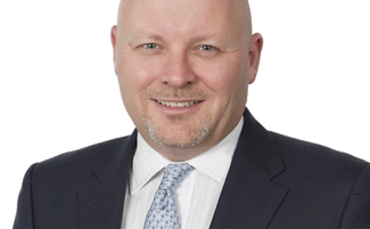Financial markets have endured their own version of Groundhog Day in recent months: the three issues that troubled investors earlier in the year – namely the precise timing of the Fed’s first rate rise, the subdued pace of global growth and the ongoing macroeconomic uncertainties in China – are not that much closer to being resolved now than they were back in the summer. So perhaps it is worth considering what has changed in markets, and what hasn’t.
The Fed, for its part, has worked very hard to try and keep the December policy meeting alive (current market pricing suggests that a December hike is now likely, having been less than a 30% probability prior to the October meeting). Nonetheless, it is still impossible to predict with complete certainty whether or not the Fed will move before the year is out, particularly given the seasonal decline in market liquidity that is seen in December. Critics of the Fed would argue that the Federal Open Market Committee (FOMC) has simply been too transparent, and that policymakers have painted themselves into a corner. If the FOMC itself is not sure about what it should do, it is impossible for anyone else to predict what the Fed will do with any accuracy.
While the Fed’s moves (or ‘none moves’) have occupied the lion’s share of the column inches in recent weeks, it is the muted tone of global economic data that is perhaps most vexing. The Lehman crisis took place well over seven years ago, and yet signs of a traditional cyclical recovery remain very hard to find. If anything, the current concern in markets is overcapacity in China and what that will mean not only for commodities and energy producers but also industrial profitability in general. Whilst we do not expect an economic recession, it is clear that life for a number of global industries is very difficult and likely to get worse. Talk of a recession in industrial profits may sound alarmist, but is probably not too wide of the mark if you happen to be a maker of mining equipment or agricultural equipment, areas where there is significant global oversupply. If you produce a commoditised, undifferentiated product – such as steel plate, for example – life is incredibly tough and companies are failing.
Why has global growth been so subdued? One explanation is that while QE has created the conditions (i.e. near-zero interest rates) for companies to invest, it only makes sense for companies to invest if they think that there is demand for what they will then produce. Post crisis, that demand has been notable by its absence, outside of emerging markets. Of course, as has been discussed ad infinitum, emerging markets are now under significant pressure (particularly the ones that have built their economies to feed Chinese demand for commodities) meaning that the global consumption outlook is muted at best. In that context, it is perhaps not surprising that companies have chosen to cut costs and use spare cash to pay dividends (or special dividends) and latterly they have used financial engineering (such as share buybacks) to support their share prices. In a world where organic growth is hard to find, it makes much more sense to buy back shares than committing to expensive, long-term projects involving huge amounts of capital expenditure and uncertain pay-offs – as many mining companies have found to their cost.
A lack of corporate confidence to invest is only part of the story. When oil prices slumped, we expected the consumer to benefit from a ‘cheap energy’ dividend, but this simply has not emerged in the way that we expected. Why is this? Rather like corporations, which are reluctant to spend on large-scale investment projects, we believe that many consumers are simply thankful to have a job in the post-crisis world and are therefore banking the gains they have made from low energy prices. Perhaps more significantly, and despite tightening labour markets in countries such as the US and UK, wage gains have been very modest. We should also not forget that a generation of people who left school or college in the late ‘noughties’ will have grown up without ever knowing the cheap and abundant finance that was available pre-Lehman. Leveraged consumption is not returning in the US or elsewhere and this will have a material impact on the level of GDP growth we will see next year and in the coming years. To put this another way, the unholy trinity of tighter regulation, higher legal costs and tougher capital requirements will mean that retail banks will increasingly look like utilities in the future.
What does this mean for investors? In our estimation, organic growth will be hard to find and that perhaps explains the recent pick-up in M&A. Companies that have already shrunk their cost bases and used financial engineering to lift their share price have few other options left in the locker. Indeed, increased M&A and the fact that companies have become more creative with their balance sheets has driven the recent deterioration in credit fundamentals in the US.
The fact that growth is likely to be subdued means that interest rates will be lower for longer. Indeed, the terminal fed funds rate for this cycle could be as low as 2%. On paper, this is positive for bonds but it is hard to get excited about government bonds given where yields are and the fact that the Fed will be raising rates. European high yield does however look interesting, given a meaningful yield spread over government bonds and the fact that the asset class is usually a beneficiary of M&A, unlike investment grade.
A low discount rate is in theory a major positive for equities but all the issues discussed above suggest that economic growth – and therefore earnings – are likely to be weaker than they would have been if some of the excess global productive capacity had been burnt off. We think that a selective approach in equities will pay off, particularly as Chinese growth concerns are unlikely to abate any time soon. We also think that investors will focus more on valuations and fundamentals as global liquidity continues to ebb, and in that world investors should be ready for more stock-specific disappointments. In future, the Fed will not be underwriting equity markets and despite the likelihood of further action by the ECB, there will no longer be a rising tide of global QE that lifts all boats.
Mark Burgess is CIO EMEA and Global Head of Equities at Columbia Threadneedle Investments.


